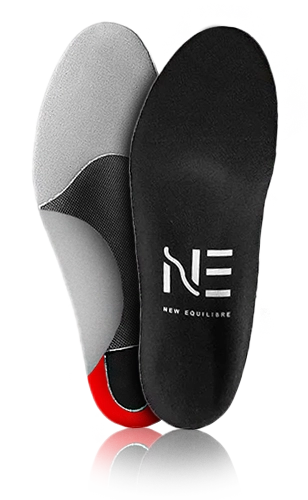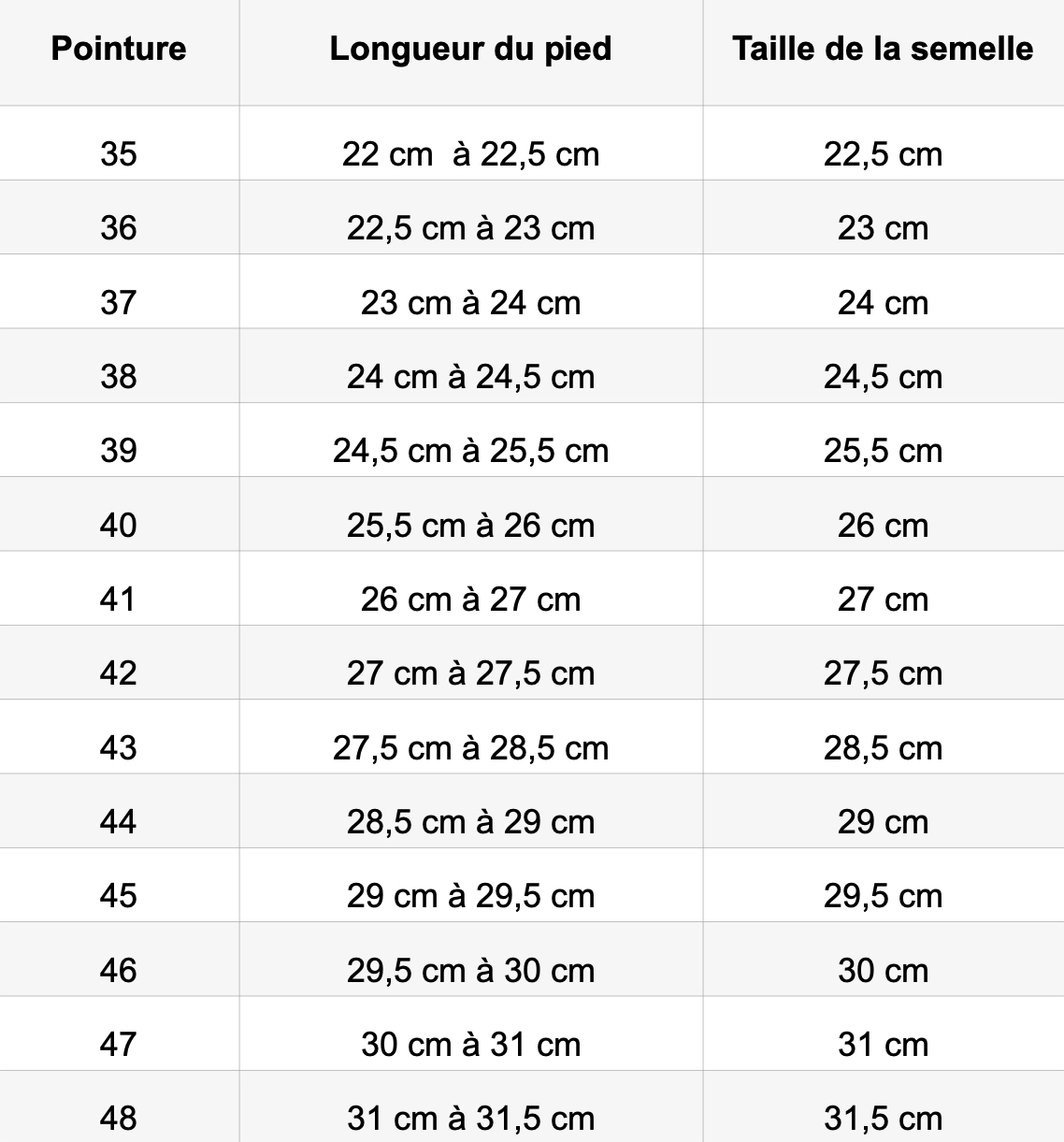Calcaneal spur
the complete guide
- Published on
- By New Equilibre
SUMMARY :
- What is a calcaneal spur?
- What are the symptoms of calcaneal spur?
- How long does a calcaneal spur last?
- Insoles for calcaneal spur
- Can you walk with a plantar calcaneal spur?
- What causes calcaneal spur?
- What medication should I take to relieve calcaneal spur?
- How to relieve a calcaneal spur with Grandma's remedies?
- What shoes should I wear if I have a calcaneal spur?
Calcaneal spur is a bony outgrowth of the heel that can cause intense pain, particularly when walking or leaning on the foot for long periods.Often linked to plantar fasciitis, this pathology results from inflammation of the plantar fascia, a membrane connecting the calcaneus to the toes.It can be aggravated by poor posture, excessive pressure on the foot or wearing unsuitable footwear.
To relieve pain and limit deformity, a number of solutions are available: orthopedic shoes, shock-absorbing insoles, orthotics and physiotherapy exercises. Le traitement peut également inclure des étirements spécifiques, des infiltrations ou, dans certains cas, une chirurgie. Good plantar support and proper weight-bearing are essential to prevent symptoms worsening and promote better recovery.
Calcaneal spur pain is often felt in the heel area, particularly when taking your first steps in the morning or after a prolonged period of rest. Its onset is often linked to factors such as excess weight, intense physical activity or unsuitable footwear.
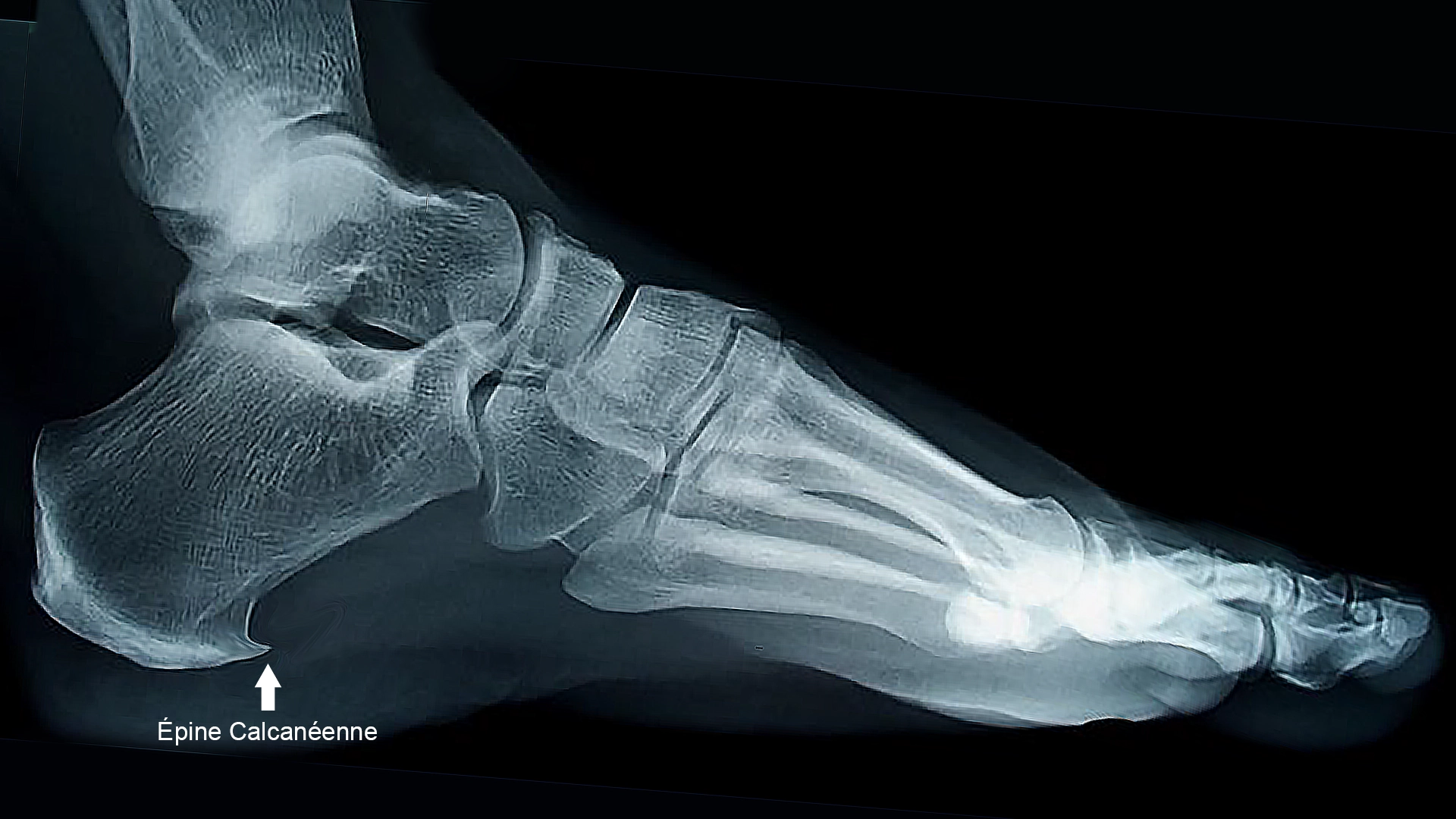
Discover our solutions and products specially designed to relieve heel spurs and improve your day-to-day comfort. Whether you're looking for solutions to reduce pressure on your heel or optimize your posture, our comprehensive range is sure to meet your needs. Take care of your feet and rediscover the pleasure of pain-free walking!
What is a calcaneal spur?
There are two types of Clacaneal Spur :
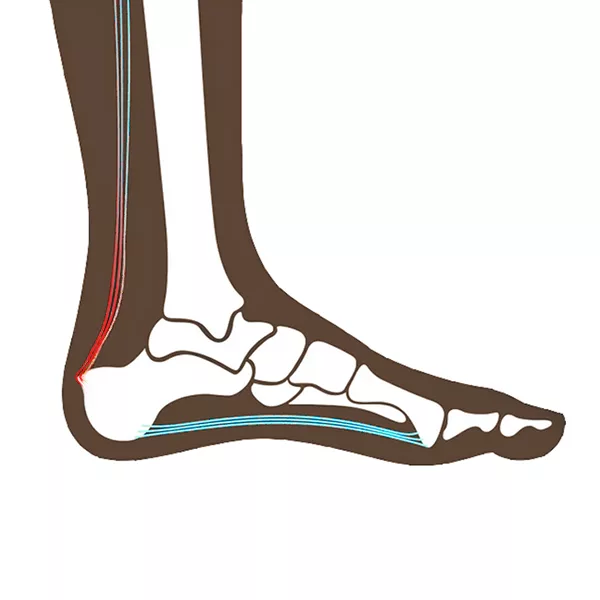
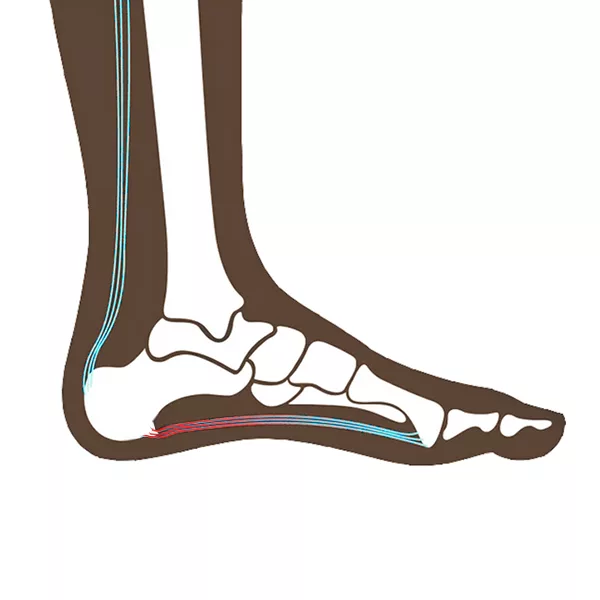
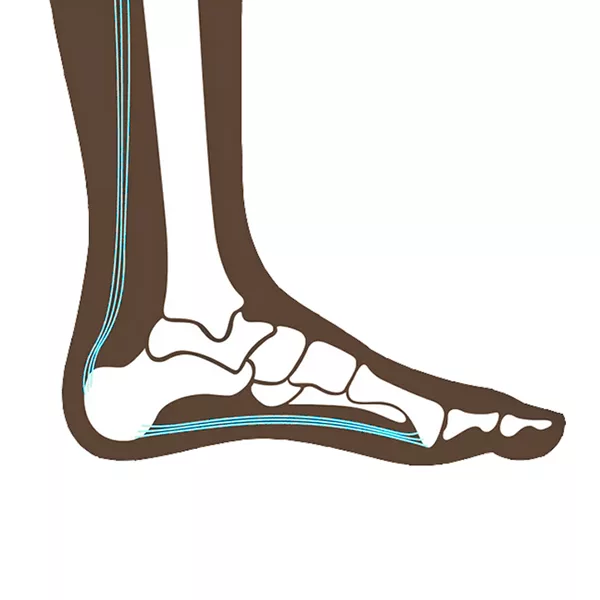
Posterior calcaneal spine (cranial calcaneal spine) : In this case, the bony outgrowth forms at the base of the calcaneus, at the Achilles tendon. Pain is felt under the heel. Posterior calcaneal spur occurs when the Achilles tendon is overworked.
Inferior heel spur (plantar heel spur) : The bony deformity appears here on the underside of the heel. The inferior heel spur is created when the plantar fascia is overworked.
The 100% Made in France solution
Order your insoles to relieve Calcanean Spur in just a few clicks via our online store!
Fast, free delivery to mainland France.
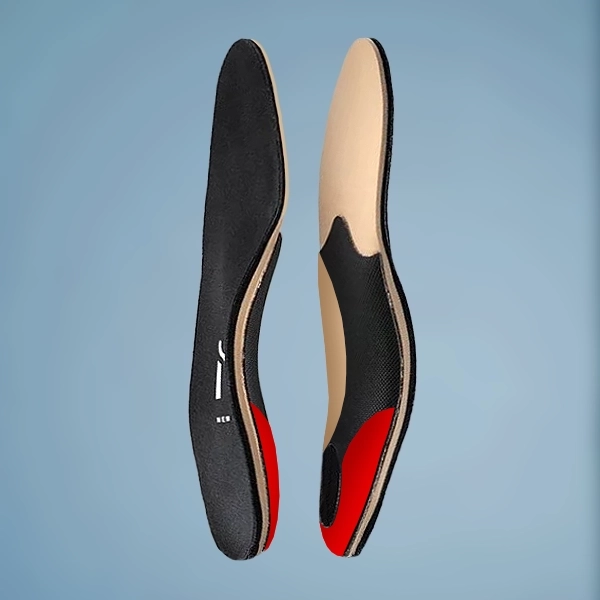
What are the symptoms of calcaneal spur?
How long does a calcaneal spur last?
Orthopedic insoles for calcaneal spur :
For fast relief from the pain caused by heel spurs, our orthopedic insoles have been specially designed to improve the distribution of support and provide optimum comfort for everyday use. Designed by our orthopedic experts with over 35 years' experience, they are the ideal solution for restoring your well-being.
Made from high-quality materials, our insoles offer optimum comfort all day long. Each layer has been carefully selected to meet the specific needs of your feet: shock absorption in the heel, balanced load distribution and ideal density for lasting support.
Thanks to their thermoformed shape, they adapt perfectly to the anatomy of your foot, effectively supporting the medial, lateral and anterior plantar arches. This targeted support helps relieve muscle and tendon tension, reducing the inflammation and pain of plantar fasciitis. By maximizing the weight-bearing surface of your foot, our insoles evenly distribute pressure and rebalance your posture, promoting overall well-being.
Give your feet the comfort they deserve by ordering them directly from our online store. Take the first step towards a pain-free everyday life!
Free fast delivery to mainland France.
Satisfied, exchanged or refunded.
Can you walk with a plantar calcaneal spur?
It is perfectly possible to walk despite the presence of a heel spur. Pain is generally felt in the morning and evening, although it may occur less frequently during the day. The frequency and intensity of pain will depend on the stage of the pathology. Orthopedic insoles are the most effective, long-term solution for ensuring pain-free walking.
Wearing orthotics with a calcaneal spur
The orthopedic insoles can relieve heel spur inflammation by relieving pressure on the heel. Thermoformed insoles supporting the medial, lateral and anterior plantar arches evenly distribute the foot's support zones and relieve pressure on the hindfoot. These supports relieve pressure on your musculo-tendinous system, rapidly reducing the inflammation caused by this pathology. The New Equilibre Insoles are designed to effectively relieve this pathology. Equipped with cushioning and comfort materials, they also provide excellent comfort and long-lasting pain relief. Orthotics should be worn daily to prevent the inflammation from returning. Wearing orthotics is the most effective treatment for overcoming the pain of heel spur, quickly and over the long term.
Calcaneal spur causes
Inadequate postural habits and excessive strain when standing, walking or running are the main sources of heel spurs.
Inflammation of the plantar fascia or, more rarely, the Achilles tendon:
When you subject the tendons in your feet to excessive and prolonged strain due to long periods of standing or sporting activity, non-physiological tensions can emerge. In fact, micro-tears or inflammations can also develop in the heel area. In fact, micro-tears or inflammations can also develop in the heel. This is known as plantar fasciitis. So, in response to this incorrect posture, your body adapts by accumulating calcium at the base of the tendons under increased pressure. This accumulation is designed to strengthen the calcaneus and restore the natural tension balance. However, this bony outgrowth is not responsible for the pain. This is the result of increased tension on the periosteum and, in advanced stages, chronic inflammation of the plantar fascia. More rarely, heel pain can result from increased tension and inflammation of the Achilles tendon.
Lack of mobility in the sacroiliac joint:
The sacroiliac joint connects the sacrum to the ilium, the back of the pelvis to the spine. Although it may seem surprising, reduced pelvic mobility can lead to heel problems. Indeed, the often unilateral lack of mobility of the sacroiliac joint can lead to misalignment of the pelvis. Altered tensions along the posterior myofascial chain create a length imbalance between the legs. As a result, weight is distributed unevenly across your feet. As a result, the calf and foot muscles are overloaded on the side with the greatest stress. The heel adopts an unnatural position, over-tensioning the plantar fascia and causing inflammation. Translated with www.DeepL.com/Translator (free version)
What medication should I take to relieve calcaneal spur?
In the event of heel spur, it is advisable to consult a doctor or podiatrist/orthopedist to obtain a precise diagnosis and a treatment adapted to your situation. Several medical solutions can be considered:
Anti-inflammatories and analgesics
The doctor may prescribe non-steroidal anti-inflammatory drugs (NSAIDs) such as ibuprofen to reduce inflammation and relieve pain. Analgesics such as paracetamol can also be used to reduce pain.
Corticosteroid injections
In some cases, corticosteroid injections can be administered directly into the affected area to relieve inflammation and pain. This treatment must be carried out with caution and under medical supervision, as it can potentially lead to complications.
How to relieve a calcaneal spur with Grandma's remedies?
In addition to medical treatment, there are a number of natural methods that can be used to quickly relieve and heal heel spurs. First and foremost, it's important to rest the affected foot, so as not to exacerbate the inflammation.
Hot and cold therapy
Muscle stretching
Regular stretching can help improve the flexibility and resistance of foot muscles and ligaments. Here are a few exercises you can do at home:
- Calf stretch: stand facing a wall, place your hands against the wall and move one foot in front of the other. Keep your back heel on the ground and push gently towards the wall.
- Arch stretch: Sit on a chair and place a tennis ball under the arch of your foot. Roll the ball under your foot for a few minutes.
- Toe stretch: Sit on a chair and place your affected foot on the other knee. Gently pull the toes towards you to stretch the arch ligaments.
Foot massages
Evidence shows that self-massage of the plantar fascia and calf muscles can improve mobility and reduce muscle tension. So, when self-massaging the plantar fascia, pay attention to a few key points: work close to the heel spur, apply light pressure in the painful area. Don't forget to pay attention to the mobility of the sacroiliac joint. These simple measures can help relieve heel spur symptoms while you rest.
These treatments do help to alleviate pain, but only in the short term. They won't provide total relief from this pathology, which will keep resurfacing without effective treatment to support your foot. This is why daily orthopedic inserts remain the best long-term treatment.
What shoes should I wear if I have a calcaneal spur?
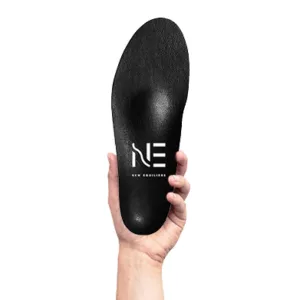
New Equilibre
Healthcare professionals specializing in the manufacture of orthopedic insoles for over 30 years. Clinically proven expertise with thousands of New Equilibre users and patients in orthopedic practices.

